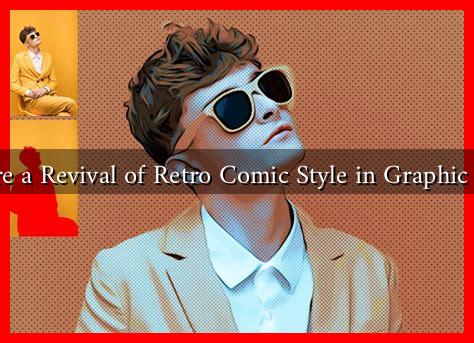-
Table of Contents
Is There a Revival of Retro Comic Style in Graphic Design?
In recent years, the graphic design landscape has witnessed a resurgence of retro comic styles, captivating both designers and audiences alike. This revival is not merely a nostalgic nod to the past; it reflects a broader cultural trend that embraces vintage aesthetics while integrating modern sensibilities. This article explores the factors driving this revival, its manifestations in contemporary design, and the implications for the future of graphic design.
The Allure of Nostalgia
Nostalgia plays a significant role in the revival of retro comic styles. As society grapples with rapid technological advancements and cultural shifts, many individuals find comfort in the familiar aesthetics of their childhood. The retro comic style, characterized by bold colors, exaggerated characters, and dynamic layouts, evokes a sense of warmth and familiarity.
- Emotional Connection: Retro comic styles often remind people of their formative years, creating an emotional bond that contemporary designs may lack.
- Timeless Appeal: The simplicity and clarity of retro designs make them easily digestible, appealing to a wide audience.
- Social Media Influence: Platforms like Instagram and Pinterest have made it easier for retro styles to gain traction, as users share and celebrate vintage aesthetics.
Modern Interpretations of Retro Comic Style
Graphic designers today are reinterpreting retro comic styles in innovative ways, blending traditional techniques with modern technology. This fusion results in unique designs that resonate with both nostalgic sentiments and contemporary tastes.
- Digital Illustration: Artists are using digital tools to create illustrations that mimic the hand-drawn quality of vintage comics. Programs like Adobe Illustrator and Procreate allow for intricate detailing while maintaining a retro feel.
- Typography: Retro comic fonts, often characterized by bold, playful lettering, are making a comeback. Designers are incorporating these fonts into branding and advertising to evoke a sense of fun and creativity.
- Color Palettes: The use of vibrant, saturated colors reminiscent of classic comic books is prevalent in modern designs, creating eye-catching visuals that stand out in a crowded marketplace.
Case Studies: Brands Embracing Retro Comic Styles
Several brands have successfully integrated retro comic styles into their marketing strategies, demonstrating the effectiveness of this aesthetic in capturing consumer attention.
- Pepsi: In 2021, Pepsi launched a limited-edition can design inspired by vintage comic book art. The campaign was well-received, generating buzz on social media and increasing sales.
- Marvel and DC: Both comic giants have embraced retro styles in their merchandise, from apparel to collectibles, appealing to both nostalgic fans and new audiences.
- Local Businesses: Many small businesses are adopting retro comic styles in their branding to differentiate themselves in competitive markets. For instance, local cafes and boutiques often use comic-inspired graphics to create a unique identity.
The Impact of Technology on Retro Revival
The rise of digital tools has made it easier for designers to experiment with retro styles. Software advancements allow for greater flexibility and creativity, enabling artists to blend traditional comic techniques with modern design elements.
- Accessibility: Digital platforms have democratized design, allowing aspiring artists to create and share their work without the need for expensive equipment.
- Collaboration: Online communities foster collaboration among artists, leading to the exchange of ideas and techniques that further enhance the retro revival.
- Print on Demand: Services like Printful and Redbubble allow designers to produce retro-inspired merchandise without significant upfront costs, making it easier to reach niche markets.
Conclusion: The Future of Retro Comic Style in Graphic Design
The revival of retro comic styles in graphic design is more than a fleeting trend; it represents a cultural shift towards nostalgia and simplicity in an increasingly complex world. As designers continue to explore and innovate within this aesthetic, we can expect to see further integration of retro elements in various forms of media.
In summary, the revival of retro comic styles is driven by emotional connections, modern interpretations, and technological advancements. Brands that embrace this aesthetic can create memorable identities that resonate with consumers, ensuring that the charm of retro comics remains relevant in the contemporary design landscape. As we move forward, the fusion of past and present will undoubtedly shape the future of graphic design.
For more insights on graphic design trends, visit Creative Bloq.

